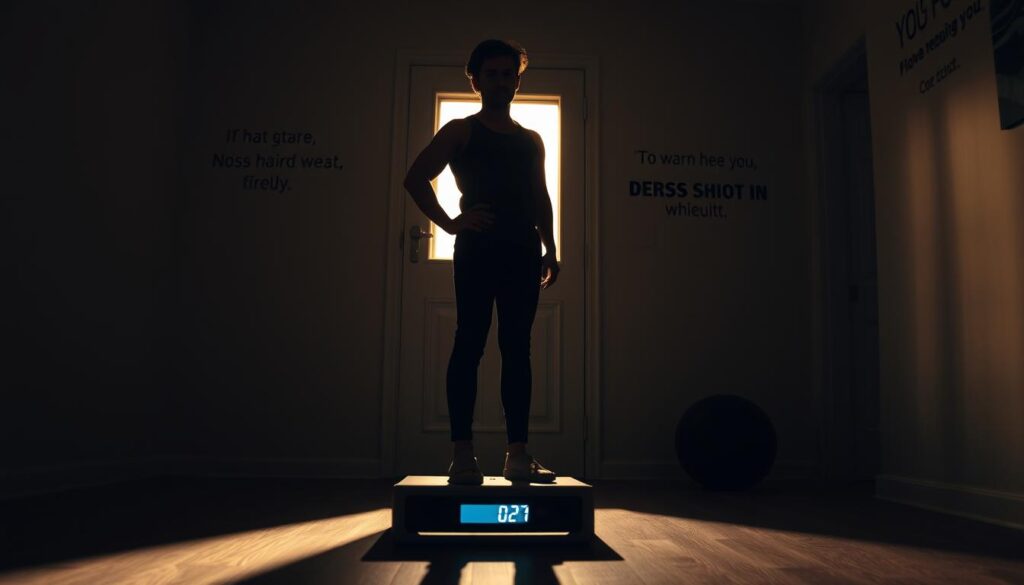Ever wonder why some people lose weight and keep it off while others struggle? The answer lies in sustainable motivation. Small consistent efforts often lead to lasting results not extreme diets or quick fixes.
Setting realistic goals is key. Research shows that losing just 5-10% of body weight improves health markers like blood pressure and cholesterol. Slow steady progress 1-2 pounds per week creates habits that stick.
Finding the right motivation makes all the difference. Whether it’s better energy confidence, or long-term wellness connecting to a deeper why fuels persistence. Ready to unlock proven strategies?
Key Takeaways
- Small weight reductions 5-10% offer major health benefits
- Internal motivation drives better long-term results
- SMART goals create measurable, achievable progress
- Meal prep reduces daily decision fatigue
- 1-2 lbs/week is the safest, most sustainable rate
1. Set Clear and Realistic Goals
Clarity in objectives transforms weight loss from wishful thinking to measurable progress. Research confirms that losing 5–10% of body weight significantly reduces diabetes risk NHS. Start by aligning targets with your lifestyle and health priorities.
Define Your Why
Beyond medical advice, identify personal motivations. Is it energy for hobbies? Confidence in social settings? A motivation audit helps sustain effort when challenges arise.

Use the SMART Goal Framework
SMART goals Specific Measurable, Attainable Relevant, Time-bound boost success rates by 42% Journal of Nutrition. Example Lose 8 lbs in 2 months by walking 30 minutes daily.
Process goals e.g. 4 gym sessions/week matter more than scale numbers alone. Tools like LiveWell Dorset’s templates simplify tracking.
Break Down Long Term Goals
Divide a 6-month plan into weekly steps. At 180 lbs, aim for 9–18 lbs total CDC-recommended 1–2 lbs/week. Celebrate waist measurements or stamina improvements as non-scale victories.
Commitment devices like prepaid fitness classes reinforce accountability. Adjust targets if life disrupts progress flexibility prevents burnout.
2. How to Stay Motivated During Your Weight Loss Journey
Tracking progress transforms effort into measurable results. Studies show food journal users lose 50% more weight American Journal of Preventive Medicine. Tools like MyFitnessPal simplify logging, while handwritten diaries capture emotional triggers.

Track Your Progress with a Journal
Choose a method that fits your lifestyle:
| Method | Best For | Tips |
|---|---|---|
| Digital Apps | Tech savvy users | Sync with fitness trackers |
| Pen & Paper | Visual learners | Use River Valley Weight Loss templates |
Note energy levels and portion sizes. Consistency matters more than perfection.
Celebrate Non Scale Victories
Non-scale wins improve adherence by 68% Obesity Society. Examples:
- Climbing stairs without fatigue
- Fitting into smaller clothing sizes
- Improved sleep quality
Celebrate BMI category shifts instead of fixating on numbers.
Visualize Your Success
Mental contrasting reduces setbacks by 33%. Try these techniques:
- Create vision boards with goal outfits
- Practice 5-minute daily visualization meditations
- Take weekly photos in consistent lighting
Pair imagery with action plans for tangible results.
3. Build a Support System
Success often comes easier with the right people by your side. Studies show that individuals with strong support systems are 50% more likely to maintain healthy habits. Whether it’s friends, online groups, or a dedicated partner, collaboration fuels progress.

Engage Friends and Family
Involve loved ones in your goals. Host healthy potlucks to swap recipes or start a workplace walking club. Research confirms that social accountability boosts adherence by 76%.
Join a Weight Loss Community
Online forums like r/loseit 2M+ members offer 24/7 encouragement. LiveWell Dorset’s group sessions report an 89% retention rate, proving structured community drives results.
Find an Accountability Partner
Pair up with a gym buddy or Noom goal specialist. A Mayo Clinic study found dog owners walk 2,589+ extra steps daily proof that shared commitments work.
- Use Fitbit Challenges for team motivation
- Train shelter dogs via Pawsitive Change programs
- Leverage WW Workshops for expert-led guidance
4. Create a Sustainable Routine
Sustainability beats short-term extremes for lasting transformation. A weight loss plan thrives on habits that fit seamlessly into daily life. Focus on systems, not sacrifices.
Choose Enjoyable Exercises
Fun workouts stick. Zumba burns 500+ calories per session while feeling like a dance party. Diversity prevents boredom:
- Try ClassPass for studio-hopping yoga, cycling, boxing
- Alternate HIIT and yoga days to protect joints
- Designate Fridays for new activities rock climbing or aqua aerobics
Meal Prep and Plan Ahead
Prepping saves 90 minutes weekly on food decisions. Batch cook using apps like Paprika for automated grocery lists. Compare strategies:
| Approach | Time Saved | Best For |
|---|---|---|
| Sunday prep parties | 3+ hours/week | Families |
| NHS Easy Meals | 45 mins/recipe | Beginners |
Incorporate Flexibility to Avoid Burnout
Rigidity backfires. The IIFYM flexible dieting method helps 85% maintain results. Balance is key:
- Follow the 80/20 rule nutrient-dense meals 80% of the time
- Schedule strategic refeed days to boost metabolism
- Adjust plans if travel or stress disrupts routines
5. Overcome Setbacks and Challenges
Progress isn’t always linear setbacks are part of every successful transformation. Studies reveal all-or-nothing thinkers regain 40% more weight, while flexible planners maintain results longer. Embrace these strategies to navigate hurdles.
Anticipate Obstacles
Identify common triggers like travel or stress. Prepare emergency kits with protein bars or resistance bands. Restaurant survival guides help stick to goals when dining out.
| Obstacle | Solution | Tool |
|---|---|---|
| Holiday feasts | Pre-log meals in MyFitnessPal | Nutritionix app |
| Work deadlines | 5-minute desk stretches | Habitica reminders |
Practice Self Forgiveness
Self compassion cuts binge eating by 55%. The RAIN technique helps:
Recognize cravings, Allow them without judgment, Investigate triggers, Nurture yourself with healthier choices.
Schedule quarterly reviews to assess patterns without guilt.
Adjust Your Plan as Needed
Flexibility prevents burnout. Try the 3-strike rule: After three missed workouts, revise the schedule not the goal. Teladoc dietitians can tweak macros for life changes.
- Analyze MyFitnessPal data for calorie trend gaps
- Swap HIIT for yoga during high-stress weeks
- Reward consistency with non-food treats e.g., massages
6. Leverage External Motivators
External tools can amplify your progress when internal drive fluctuates. Research shows combining personal motivation with strategic reinforcements boosts long-term success rates by 61%.
Use Apps and Technology
Wearables like Fitbit add 43 daily active minutes on average. Sync devices with nutrition apps to track macros and workouts seamlessly.
- Apple Watch + Lose It! for calorie monitoring
- Charity Miles app converts exercise into donations
- Peloton’s #WeightLossJourney hashtag for community
Reward Yourself Without Food
Non-food incentives improve adherence by 63%. Consider these examples:
- Fitness Fiduciary points for gym check-ins
- Spa treatments at 5-pound milestones
- New workout gear after 30 consistent days
Find Inspiring Role Models
Relatable success stories increase effort by 81%. Follow ObeseToBeast’s YouTube channel or attend ObesityHelp conferences. These things create accountability as part of your routine.
Conclusion
Small steps lead to big changes when consistency meets commitment. Prioritize sustainable weight loss by setting realistic goals, tracking progress, and leaning on support systems. Remember, 1–2 pounds weekly ensures long-term health benefits.
Tools like LiveWell Dorset’s free guides or River Valley’s maintenance programs add structure. Measure success beyond the scale energy levels, clothing fit, and stamina matter just as much.
Ready to start? Join a 30-day challenge to apply these steps. Adjust your plan as needed, and celebrate every win. Your journey begins now.





